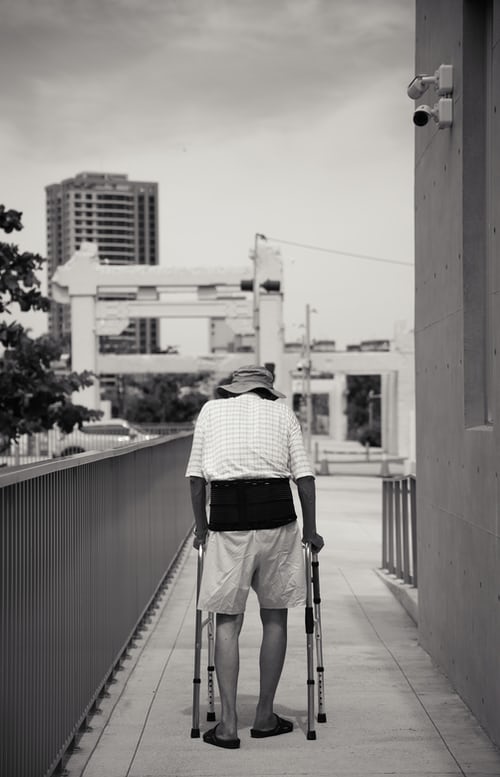Chiropractic and Osteoarthritis

Arthritis. You know the term, but you’re probably like most people and have little idea of what it actually is, why it occurs, and what it means to your health. There are different types of arthritis and are classified based on what causes them and how they present.
Today we will look at osteoarthritis and how it affects the spine.
Osteoarthritis
Osteoarthritis is a condition in which joint cartilage and underlying bone deteriorates and degrades. The degradation often causes symptoms of progressive pain, stiffness, and even joint and bone disfiguration. It can occur in any joint within the body. Common areas that are afflicted include the spine, knees and hips. It is diagnosed usually with signs, symptoms and X-ray confirmation.
Why Does It Occur?
Let’s start with joint and bone health facts. Joints are where two bones meet and that juncture is wrapped in tissue and filled with fluid. There are different types of joints that all have motions specific to that type. Spinal joints move in the direction of flexion (bending forward), extension (bending backward), and some rotation or twisting. This is different compared to a hip joint that is a ball and socket, which allows flexion, extension, circumduction, abduction (moving leg away from body), adduction (moving leg toward the body), as well as internal and external rotation. In a healthy body, bone is going through a process at a consistent rate in which it is being broken down, reabsorbed, and new bone is being laid down.
When joints function and move through the full range of motion properly with ease, correct alignment of the bone is maintained; when bone is healthy and being reabsorbed and laid down at a consistent rate, both joints and bones remain healthy and don’t degrade. When the range of motion, alignment, and/or bone breakdown/reabsorption process is off, the joints begin to wear and tear and are under undue stress. Osteoarthritis is the body’s protective mechanism.
With osteoarthritis, initially joint cartilage, tissue and fluid are all negatively affected and get worn out. As a result, the joint motion and function is further impeded and the degradation worsens. When these imbalances have been present for a long enough period of time, the body senses the need to stabilize itself and lays down “extra” bone in places it wouldn’t normally be present. In turn, these boney changes further limit joint motion and function and eventually symptoms appear.
Osteoarthritis and the Spine
The spine houses and protects the nervous system, which is your master communication system. Proper functioning of the spinal joints is imperative for optimal brain and body communication and for your health. When osteoarthritis is observed in the spine, it is a very clear sign that subluxation is present and has been for some time. Although osteoarthritis cannot be reversed, when proper motion, function and alignment is re-introduced to the joint on a consistent basis, it is quite logical to infer that it will slow the progression of the condition that is based upon improper motion and function. Chiropractic adjustments restore joint range of motion and regular care from a chiropractor can help in restoration of proper joint function and alignment.
Osteoarthritis is not some wild condition that results for no known reasons. It is degradation based on improper motion, function, and alignment. What if, instead of waiting for signs and symptoms of degradation, people regularly consulted a spinal specialist such as a chiropractor to assess any joint subluxations and received regular adjustments to correct the problems? Stop in to see Dr. Zeh today to check and address your spine motion and function.
